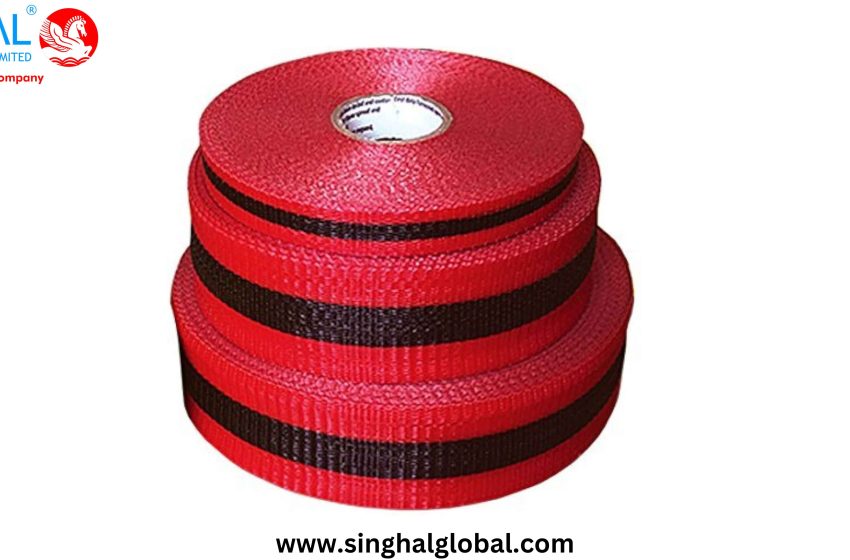How to Make Your Site Safer with Woven Barricade Tape?

Introduction to Woven Barricade Tape
Ensuring safety on any site, whether it’s a construction zone, a public event, or a hazardous area, is paramount. One effective tool that enhances site safety is woven barricade tape. Unlike traditional plastic or paper tapes, woven barricade tape combines strength with visibility to provide a robust barrier that can clearly mark dangerous or restricted areas. This article will explore the benefits of woven barricade tape and offer practical tips on how to use it effectively to make your site safer.
Understanding Woven Barricade Tape
Woven barricade tape is a safety tool designed to demarcate areas and alert people to potential hazards. Made from interlaced fibers, this tape is more durable and resilient compared to non-woven alternatives. It’s typically used in various settings, including construction sites, emergency zones, and outdoor events. The woven construction gives it enhanced tear resistance and durability, making it ideal for situations where the tape needs to withstand environmental conditions or physical abrasion.
Selecting the Right Woven Barricade Tape
Choosing the right woven barricade tape involves considering several factors including visibility, durability, and specific site needs. The most common colors for woven barricade tape are bright yellow and red, often with black text or patterns to enhance visibility. When selecting tape, consider the following:
-
Visibility: Opt for high-contrast colors and patterns that stand out against the environment. This ensures that the tape is easily noticeable, even from a distance.
-
Durability: Evaluate the strength of the tape. For high-traffic areas or challenging weather conditions, a thicker, more robust tape is preferable.
-
Size and Length: Choose tape that fits the scale of your project. Larger sites may require longer rolls, while smaller areas might need only a few shorter lengths.
Benefits of Using Woven Barricade Tape
Woven barricade tape offers several advantages over other types of safety barriers:
-
Strength and Durability: The woven design makes it resistant to tearing and fraying, ensuring it remains intact even in harsh conditions.
-
High Visibility: Brightly colored and often marked with bold text, woven barricade tape is highly visible, which helps in preventing accidental entry into hazardous areas.
-
Weather Resistance: Unlike paper or plastic tapes, woven barricade tape is less affected by weather conditions, making it suitable for both indoor and outdoor use.
Proper Installation Techniques
Effective installation of woven barricade tape is crucial for maximizing its safety benefits. Here are some key tips:
-
Secure Anchoring: Ensure that the tape is anchored securely to stable posts, fences, or stakes. Loose or poorly anchored tape can easily be displaced, reducing its effectiveness.
-
Height and Placement: Install the tape at a height where it’s visible to people approaching the area. Typically, this is around waist height. Make sure it is taut and straight to avoid sagging or tangling.
-
Overlap and Coverage: When marking larger areas, overlap the tape to provide continuous coverage. This helps in clearly delineating the restricted zone and prevents accidental breaches.
Maintaining Woven Barricade Tape
While woven barricade tape is designed for durability, regular maintenance is necessary to ensure ongoing safety. Here’s what to keep in mind:
-
Inspection: Periodically check the tape for signs of wear and tear. Replace any damaged sections promptly to maintain a clear barrier.
-
Cleanliness: Keep the area around the tape free from debris and obstructions that might obscure the tape or interfere with its visibility.
-
Weather Considerations: In extreme weather conditions, inspect the tape more frequently to ensure it hasn’t been damaged by wind, rain, or other elements.
Integrating Woven Barricade Tape with Other Safety Measures
Woven barricade tape is most effective when used in conjunction with other safety measures. Here’s how to integrate it into a comprehensive safety plan:
-
Signage: Complement the tape with clear, informative signs that provide additional context about the hazards present. This reinforces the message and helps in communicating specific risks.
-
Lighting: In low-light conditions or nighttime settings, use reflective or illuminated tape to enhance visibility. Additionally, place lights around the barricade area to ensure it is well-lit.
-
Training and Awareness: Educate site personnel and visitors about the significance of the barricade tape and the importance of adhering to safety protocols. This helps in fostering a safety-conscious environment.
Choosing the Right Woven Barricade Tape Manufacturer
The quality of woven barricade tape can vary significantly based on the manufacturer. To ensure you’re using high-quality tape, select a reputable Woven barricade tape manufacturer. Here’s what to look for:
-
Reputation and Reviews: Research manufacturers with a strong reputation for producing reliable, high-quality tape. Look for customer reviews and feedback to gauge their credibility.
-
Product Specifications: Verify that the manufacturer provides detailed specifications about the tape’s durability, visibility, and weather resistance. This helps in ensuring that the tape meets your specific needs.
-
Certifications and Standards: Choose manufacturers who adhere to industry standards and certifications. This can be an indicator of quality and reliability.
Sourcing from Reliable Woven Barricade Tape Suppliers
Once you’ve selected a manufacturer, sourcing the tape from reliable Woven barricade tape suppliers is the next step. Ensure that the suppliers:
-
Offer Consistent Quality: Choose suppliers known for providing consistent quality products. This minimizes the risk of receiving defective or subpar tape.
-
Provide Good Customer Service: Opt for suppliers who offer responsive customer service and support. This is useful for addressing any issues or questions that may arise.
-
Offer Competitive Pricing: While cost is a factor, it’s essential to balance it with quality. Reliable suppliers will provide fair pricing without compromising on the product’s effectiveness.
Case Studies: Successful Applications of Woven Barricade Tape
To illustrate the effectiveness of woven barricade tape, consider the following case studies:
-
Construction Sites: A major construction company implemented woven barricade tape to mark off hazardous zones and secure construction areas. The tape’s durability and visibility helped prevent unauthorized access and reduce the risk of accidents.
-
Public Events: For a large outdoor festival, organizers used woven barricade tape to manage crowd flow and delineate restricted areas. The tape’s bright colors and resilience ensured that attendees adhered to safety guidelines, contributing to a smooth and safe event.
Conclusion
Woven barricade tape is a versatile and effective tool for enhancing safety across various sites. Its durability, visibility, and weather resistance make it an ideal choice for marking hazardous areas and ensuring clear communication of safety boundaries. By selecting the right tape, following proper installation and maintenance practices, and sourcing from reputable manufacturers and suppliers, you can significantly improve site safety and protect both personnel and the public.
FAQs on Woven Barricade Tape
1. What is woven barricade tape and how is it different from other types of barricade tape?
Woven barricade tape is made from interlaced fibers, which gives it enhanced strength and durability compared to non-woven or plastic barricade tapes. This weaving process makes it more resistant to tearing and fraying. Unlike other types of tape, woven barricade tape is designed to withstand harsh weather conditions and high-traffic areas, making it a more robust option for safety and demarcation.
2. What are the primary uses of woven barricade tape?
Woven barricade tape is used to mark hazardous areas, restrict access, and ensure safety in various environments. Common applications include construction sites, public events, emergency zones, and any area where a visible barrier is needed to prevent accidents and manage traffic flow.
3. How do I choose the right woven barricade tape for my needs?
When selecting woven barricade tape, consider factors such as:
-
Visibility: Choose bright, high-contrast colors and patterns to ensure the tape is easily noticeable.
-
Durability: For high-traffic or harsh environmental conditions, select a tape with high tensile strength and resistance to tearing.
-
Size and Length: Ensure the tape’s width and length are suitable for the scale of your project or site.



